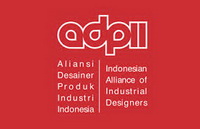Eksperimen recycle limbah kain pre-konsumsi sisa industri sebagai material elemen interior
Abstract
In Indonesia, there are several clothing industries that are already engaged in recycling their textile waste. However, it is mostly done by MSMEs. Fabric waste processing generally results in handicraft or art products. Pre-consumer textile waste consists of various types of fabric left over from the cutting or production process of clothing. The huge amount of fabric waste generated by factories can be processed into re-fiber that is soft and lightweight like cotton. This material is easy to mix with other materials to create processed materials for interior products. This research focuses on the potential of processing fabric waste into fibers mixed with other materials into new materials. The method applied in this research is experimentation. The trial gives an idea of the quality and optimization of the application of the material which is expected to be a support for interior products that are ecological, strong, aesthetically valuable and economically valuable. The findings of this research are panel materials that are expected to be used as decorative elements in space, as well as supporting furniture.
Keywords
Full Text:
PDFReferences
Abanat, J. D. J., Purnowidodo, A., & Irawan, Y. S. (2012). Pengaruh Fraksi Volume Serat Pelepah Gebang (Corypha Utan Lamarck) Terhadap Sifat Mekanik Pada Komposit Bermatrik Epoksi. Jurnal rekayasa mesin, 3(2), 352-361. DOI: https://doi.org/10.21776/jrm.v3i2.159
Aisyah, T. N., & Novitasari, D. (2016). Kencana: Kerajinan Kain Perca Menjadi Line Art sebagai Industri Kreatif Berpeluang Ekonomi. Pena: Jurnal Kreativitas Ilmiah Mahasiswa Unismuh, 3(1). 463-470.
Aritonang, Firman Pascalis. (2017). Karakteristik komposit berpenguat serat tandan kosong kelapa sawit dengan fraksi volume 3%, 5% dan 7%. Skripsi thesis. Sanata Dharma University. Retrieved from http://repository.usd.ac.id/id/eprint/30690
BPS Provinsi Jawa Timur. (2018). Banyaknya Perusahaan Industri Besar dan Sedang Menurut KBLI 2 Digit di Jawa Timur Tahun 2011-2015. Retrieved from https://jatim.bps.go.id/statictable/2018/02/15/983/banyaknya-perusahaan-industri-besar-dan-sedang-menurut-kbli-2-digit-jawa-timur-tahun-2011-2015.html.
Damanhuri, E., & Padmi, T. (2010). Diktat kuliah pengelolaan sampah. Bandung: Institut Teknologi Bandung.
Diharjo, K., dan Triyono, T. (2003). Buku Pegangan Kuliah Material Teknik. Surakarta: Universitas Sebelas Maret
Dorey, K. (2017). Why fast fashion needs to slow down. Retrieved from https://www.unenvironment.org/news-and-stories/blogpost/why-fast-fashion-needs-slowdown
Gibson, O.F. (1994). Principle of Composite Materials Mechanics, Mcgraw-Hill Inc., New York, USA
Groover, Mikell P. (1996). Fundamentals of Modern Manufacturing. Leghigh University: New Jersey.
Jain, P., & Gupta, C. (2018). The story of textile waste-Reasons and solutions. Int. J. Appl. home Sci, 5(4), 871-890.
KBBI. (n.d.) Arti daur ulang. Retrieved from https://kbbi.web.id/daur%20ulang
Muthu, S. S., Li, Y., Hu, J. Y., & Ze, L. (2012). Carbon footprint reduction in the textile process chain: Recycling of textile materials. Fibers and Polymers, 13, 1065-1070. DOI: https://doi.org/10.1007/s12221-012-1065-0
Noor, Juliansyah. (2017). Metodologi penelitian: skripsi, tesis, disertasi, dan karya ilmiah. Jakarta: Penerbit Kencana.
Raihan, C., & Damanhuri, T. P. (2010). Potensi Ekonomi Kegiatan Daur Ulang Sampah Tetrapak Kemasan Produk pada Sektor Informal di Kota Bandung. Program Studi Teknik Lingkungan ITB, Bandung.
Susilo, R. & Suhada, A.K. (2013). Pemanfaatan Limbah Kain Perca untuk Pembuatan Furnitur. Jurnal Tingkat Sarjana Seni Rupa dan Desain 1. 1-5. Retrieved from https://www.neliti.com/publications/161961/pemanfaatan-limbah-kain-perca-untuk-pembuatan-furnitur
Sweeny, G., & AlterNet. (2020, December 03). It's the Second Dirtiest Thing in the World - And You're Wearing It. Retrieved from https://www.alternet.org/2015/08/its-second-dirtiest-thing-world-and-youre-wearing-it/
Taha,.Wesam. (2016). Pre & Post Consumer Waste Definition. Retrieved from https://www.researchgate.net/publication/312498203_Pre_Post_Consumer_Waste_Definition
Tan, Z. (2016). What Happens When Fashion Becomes Fast, Disposable and Cheap? Retrieved from https://www.npr.org/2016/04/08/473513620/what-happens-when-fashion-becomes-fast-disposable-and-cheap
Wicaksono dan Tisnawati. (2014). Teori Interior. Jakarta: Penerbit Griya Kreasi.
DOI: https://doi.org/10.24821/productum.v7i1.5620
Refbacks
- There are currently no refbacks.
p-ISSN 2477-7900 | e-ISSN 2579-7328

This work is licensed under a Creative Commons Attribution 4.0 International License.
Like & Follow Us











